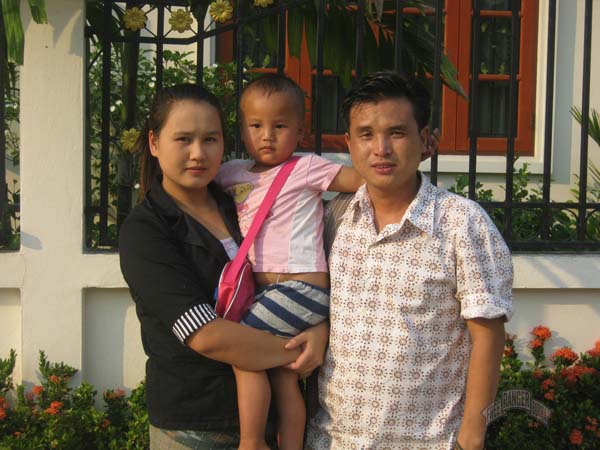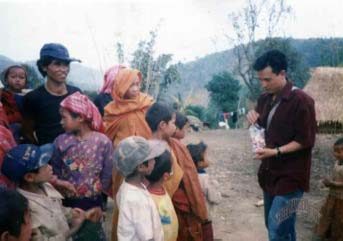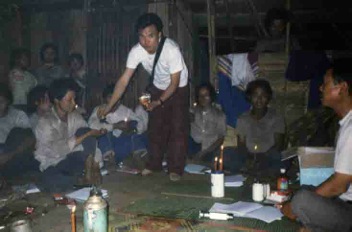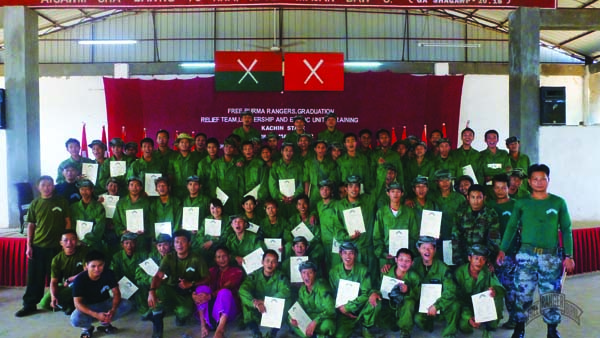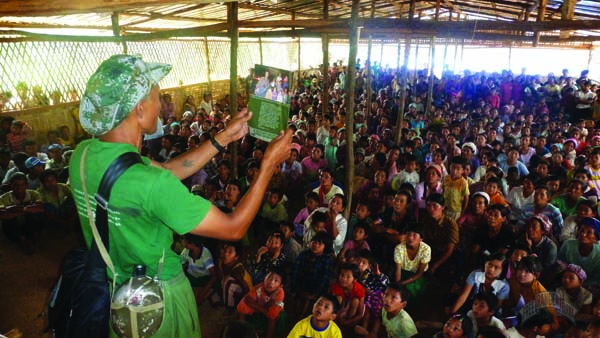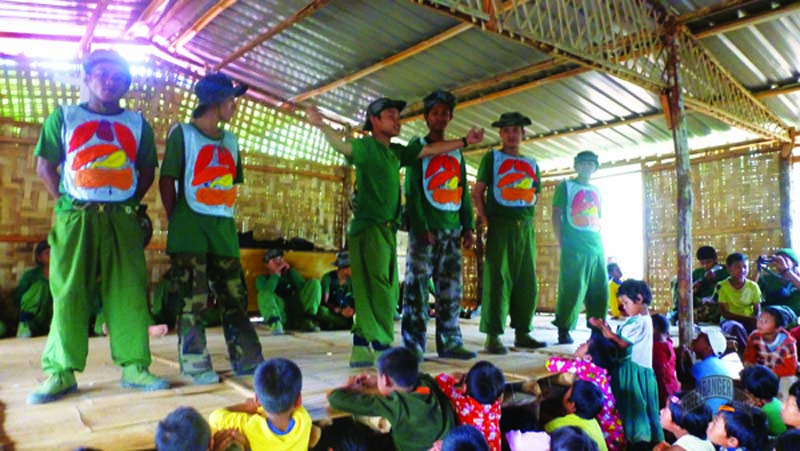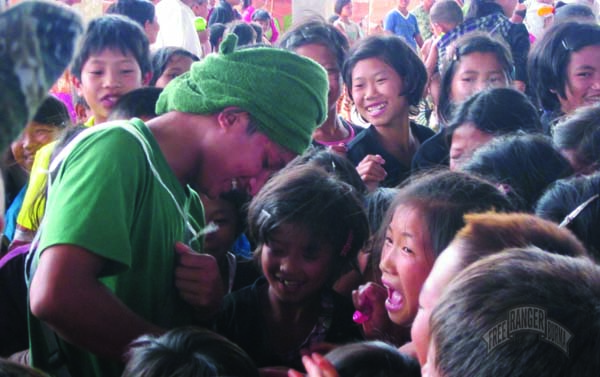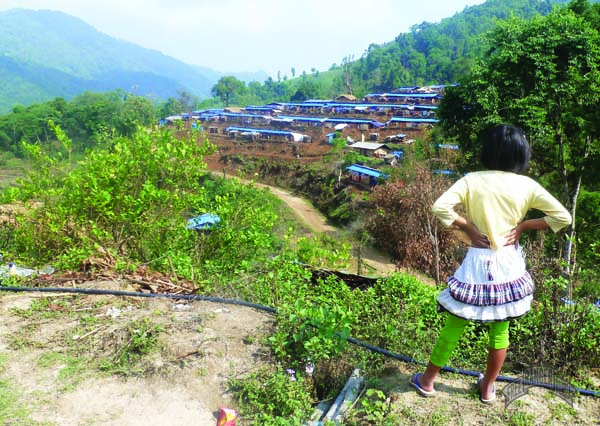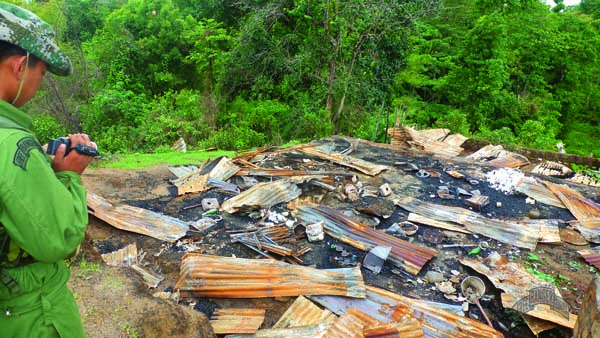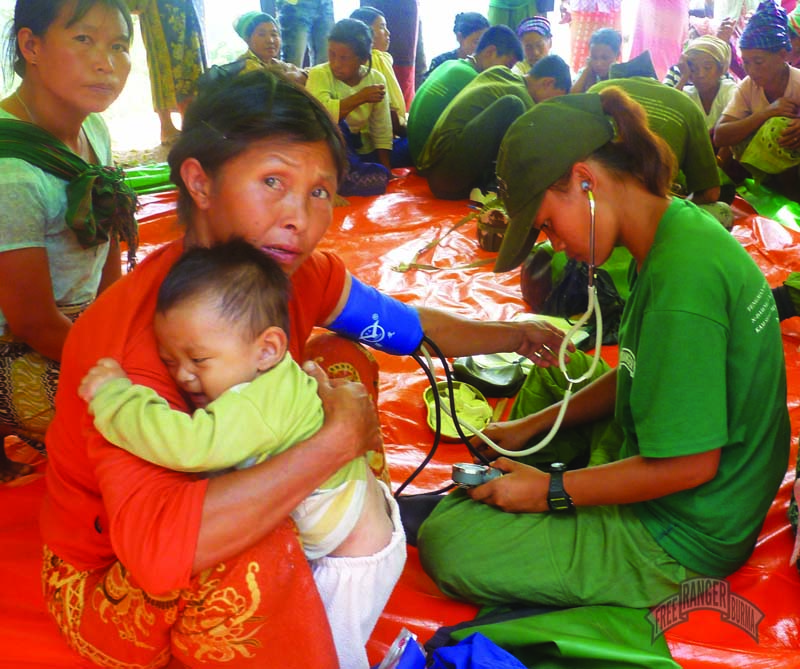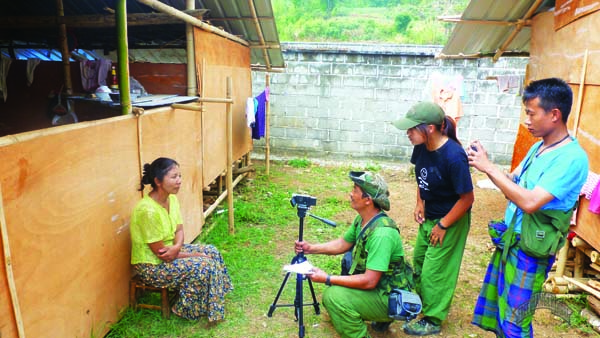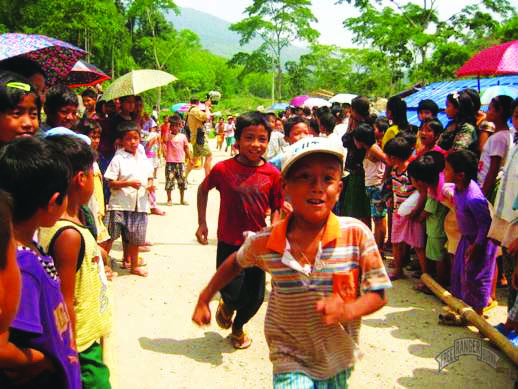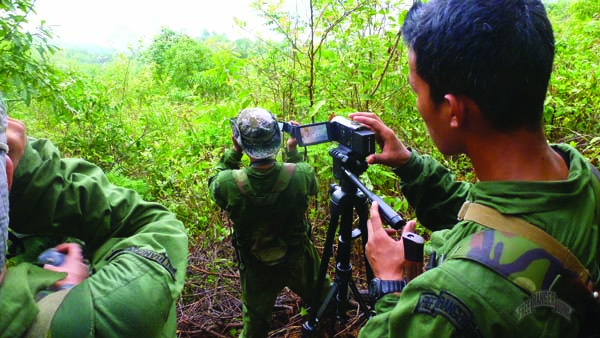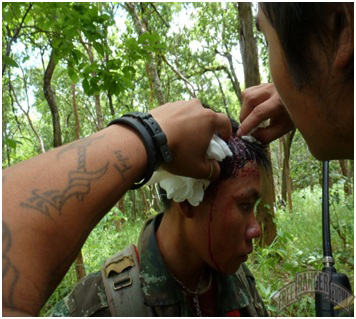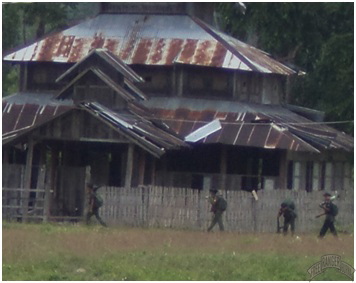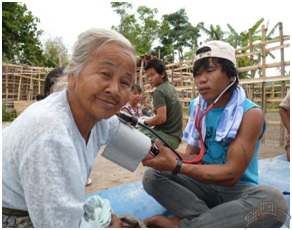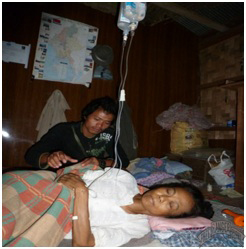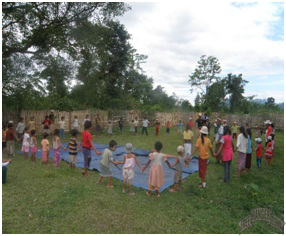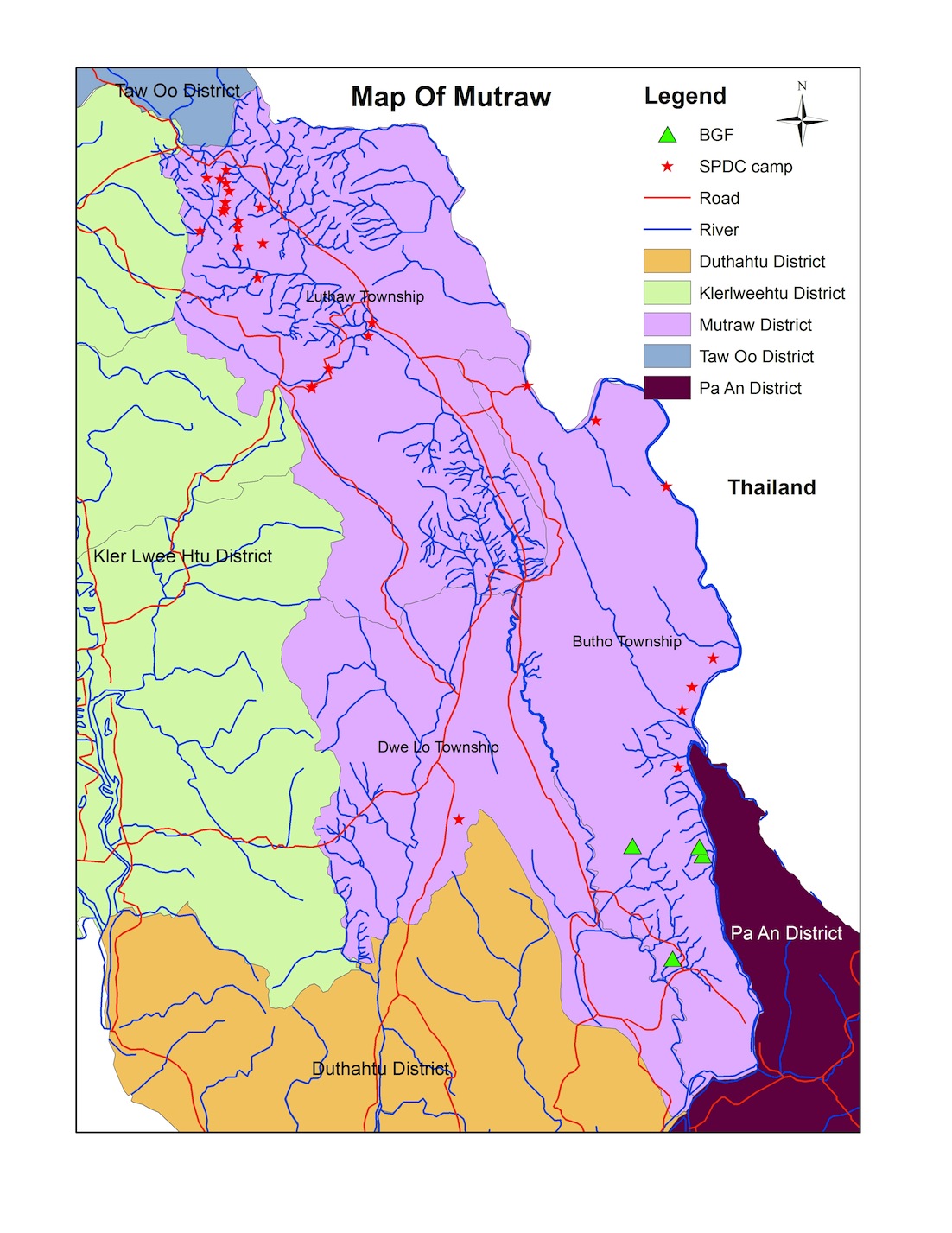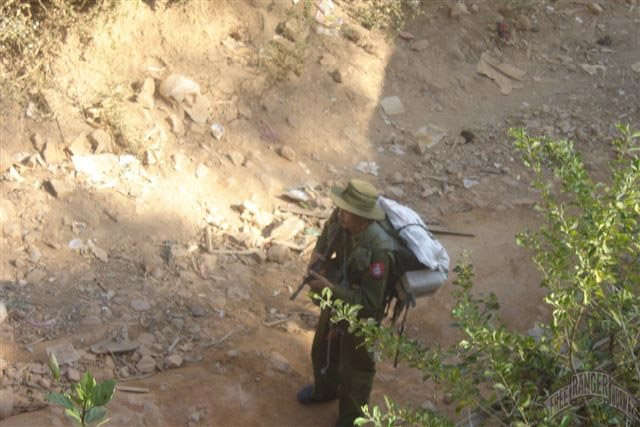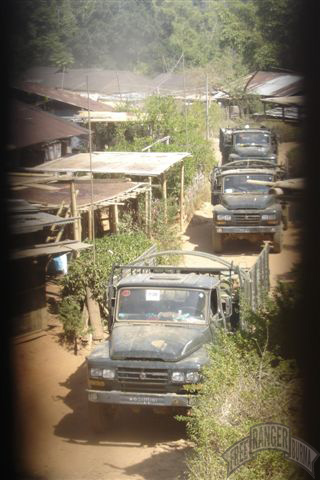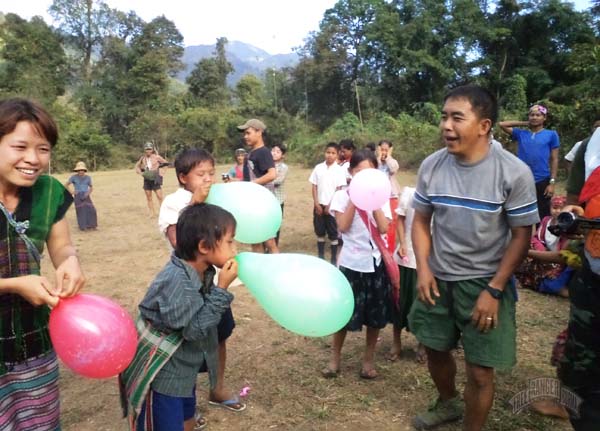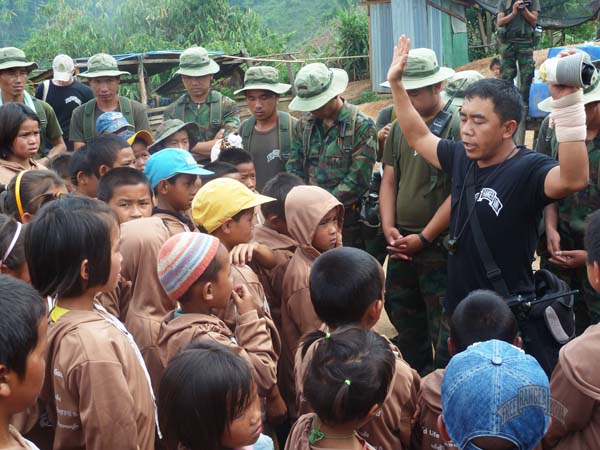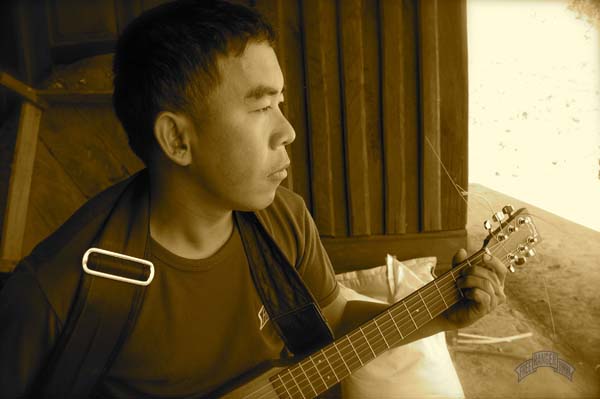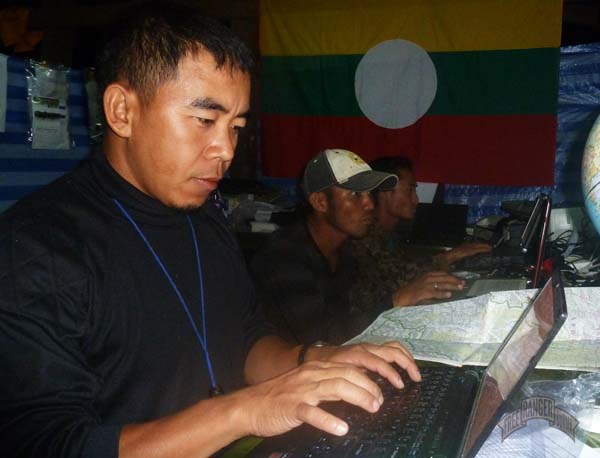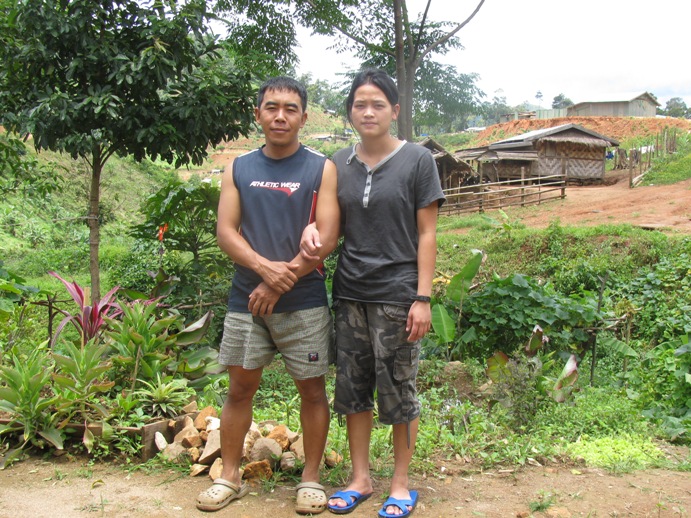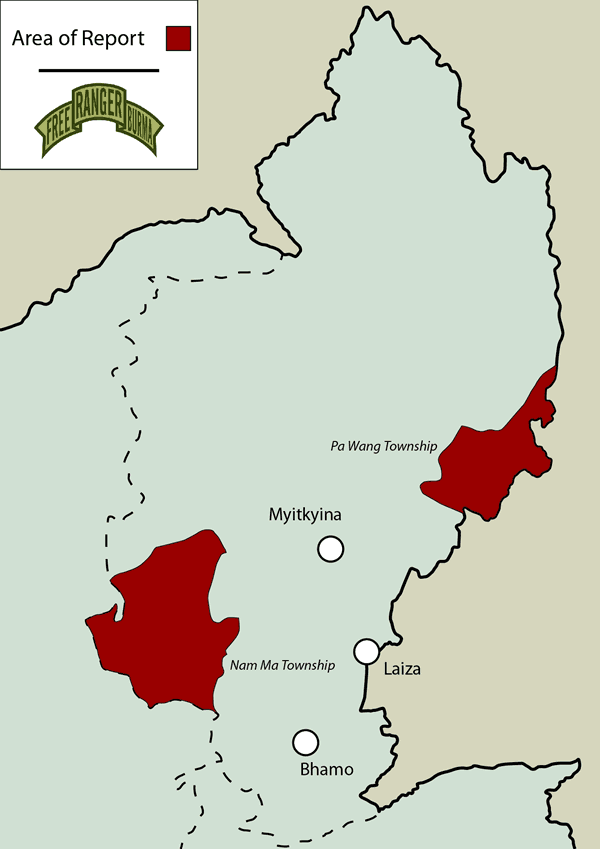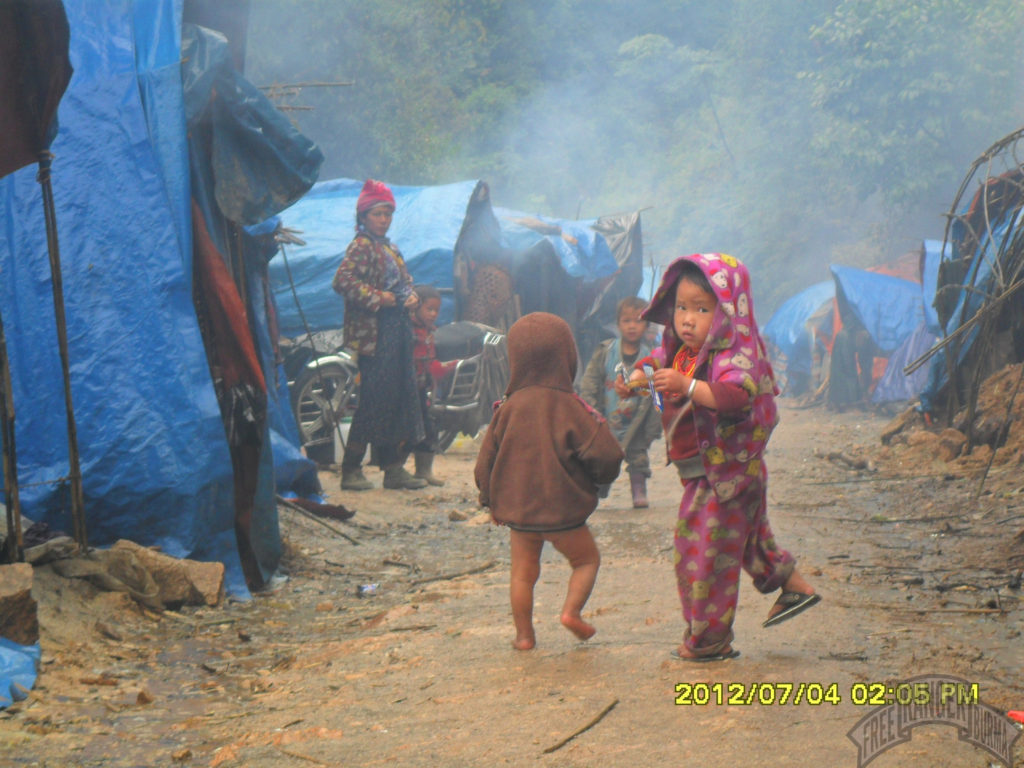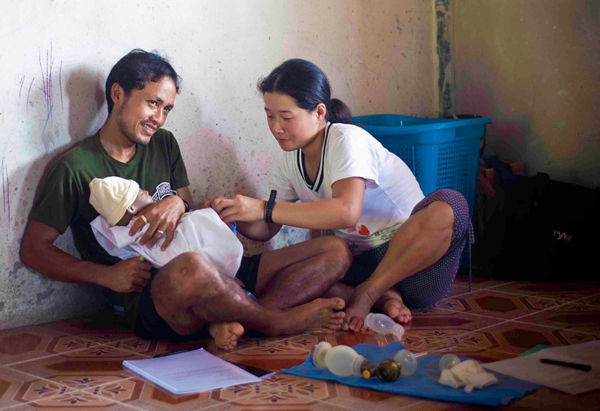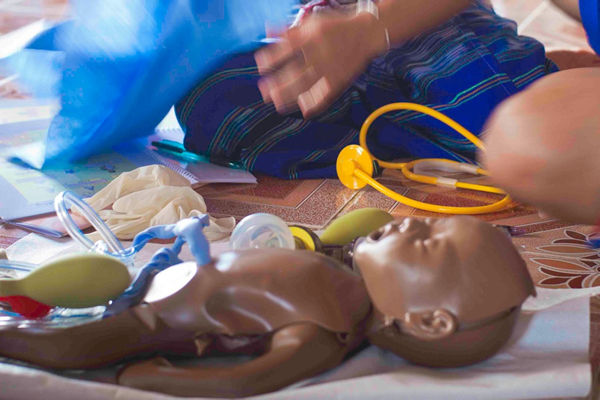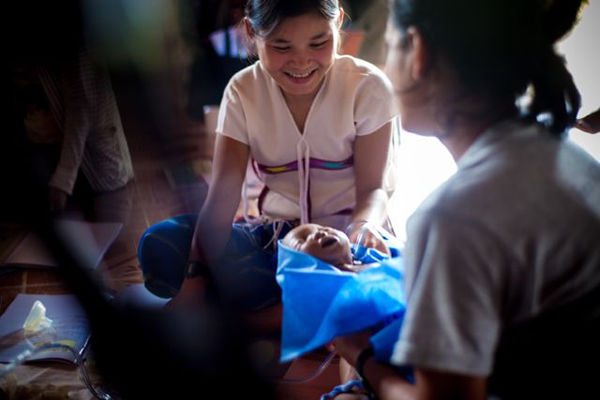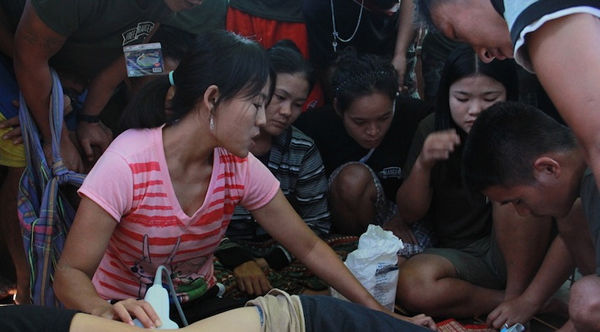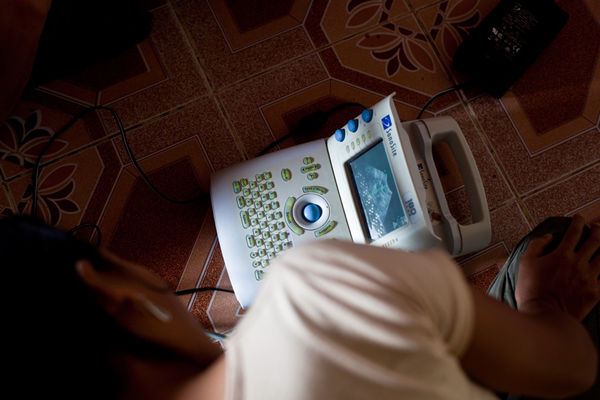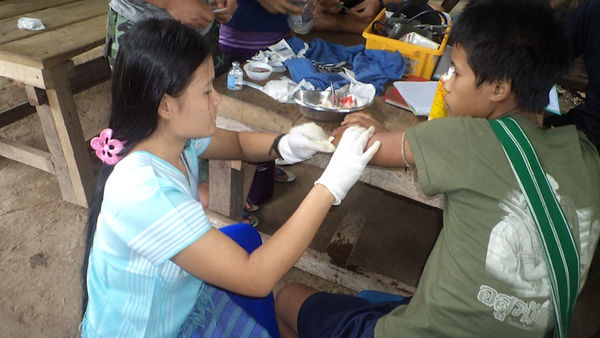| FBR REPORT: New Relief Teams Graduate, Go on Relief Missions in Kachin State | | Kachin State, Burma | | 13 July, 2012 | |
| |
Kachin State Leadership and Relief Team Training – 12 New Relief Teams Graduate
![12 New FBR teams graduate in Kachin State]()
12 New FBR teams graduate in Kachin State
On 22 May 2012, 12 new teams graduated from Free Burma Rangers Leadership and
Relief Team training, held in Kachin State. There were Kachin teams, an Arakan
team, a Ta'ang (Palaung) team and an All Burma Student Democratic Front (ABSDF)
team. The teams were trained in many topics, including leadership, basic medical
care, reporting, human rights documentation, video and digital camera use, land
navigation and GPS use, landmine removal, Good Life Club and counseling, physical
training, and rappelling. They then went on a follow-on mission in which they
put on Good Life Club programs, treated patients, documented human rights violations
and did reconnaissance missions of Burma Army activity in the mission area.
Overall, they saw some 12,000 people, helped over 2,000 children, and recorded
Burma Army activity at 15 different camps. We would like to thank the Kachin
Independence Organization (KIO), the Kachin National Organization (KNO), WPN,
the Morse family and Partners Relief and Development (PRAD) for their help and
support of this training.
![Explaining the Gobal Day of Prayer for Burma to Kachin IDPs]()
Explaining the Gobal Day of Prayer for Burma to Kachin IDPs
Good Life Club in Kachin State
![GLC team teaches health and anatomy at a program]()
GLC team teaches health and anatomy at a program
![Arakan team member hands out beads during a GLC program in Kachin State]()
Arakan team member hands out beads during a GLC program in Kachin State
On 30 November 2011, the families in Zin Lu Ka Gi Village quickly packed what
belongings they could carry and fled their village. The oncoming Burma Army
troops, from Division 88, had 600 soldiers, with horses and mules for carrying
supplies. The six houses of Zin Lu Ka Gi Village would not be an obstacle for
this unit, which had already pushed through the defending Kachin Independence
Army (KIA – pro-democracy resistance) soldiers. One resident interviewed by
our teams, Nam Bauk, together with her husband, Ma La Mai Zau Tu, packed what
she could. However, they were limited by also having to carry the youngest of
their seven children, only one year old. They walked for an hour until they
reached a road and then were able to make their way by foot and motorcycle close
to Maija Yang where camps had been set up for people fleeing attacks. But November
is cold and they realized they needed clothing and other things, especially
for the baby. Ma La Mai Zau Tu decided to go back and see if he could safely
retrieve some of their belongings. At some point after he left, his wife called
him – only to have the phone answered by a strange voice, a man's voice, a voice
that spoke Burmese. The man laughed; he said he was having a drink with her
husband. He hung up. After several days of hearing nothing more, she called
again. This time there was no joking on the other end: "Your husband is dead."
Later Ma La Mai Zau Tu's father went back to see what he could find, to look
for any final sign of – or maybe from – his son. All he found was a pile of
the baby's clothes strewn by the side of the road, where they had been dropped.
Nam Bauk is now left with questions: "Why did they kill him? He wasn't a soldier
– he was a pastor." She lives now in an IDP camp, in a 3-by-3 meter cubicle,
separated from her neighbors on three sides only by a thin sheet of plywood.
New to this situation, she is disbelieving that it can last long – she says,
"This cannot happen in the future. The future will be better."
![IDP girl looks out over IDP camp, built in the last several months]()
IDP girl looks out over IDP camp, built in the last several months
![A Ranger videos the remains of a villager's house, burned to the ground by Burma Army troops]()
A Ranger videos the remains of a villager’s house, burned to the ground by Burma Army troops
Nam Bauk was just one of thousands of people who came to eight Good Life Club
programs conducted by the new FBR teams on this, their first mission. She and
the many others like her whom we met and interviewed both challenged us in our
mission and also deepened it as we were forced to go beyond simply providing
help and consider what it really meant to give hope and love. Psalm 69 says
we should praise and give thanks to the Lord, and that that act of worship is
more to Him than things we have to offer – and it says that the poor also see
this and are glad. What does this look like for us as we are confronted with
the poor, and those 'things' seem like the best answer? The Psalm assures us
the God hears the needy, and that in seeking God our hearts will live – but
this was a question that each team member had to ask and answer in their own
hearts on this mission.
![FBR medic treating IDP woman with baby at a GLC program]()
FBR medic treating IDP woman with baby at a GLC program
The mission began with a program at a small Lisu village with around 20 children;
the programs grew progressively until the largest program in Je Yang IDP Camp,
with over 6000 people and around 800 children. By the arrival of the larger
programs we were out of many of the gifts we usually give to the children, including
bead bracelets and t-shirts. The big IDP camps provided a logistics and coordination
challenge that seemed to grow with each succeeding program. As the team met
to discuss the lack of supplies before the biggest program, at Je Yang Camp,
it was a time of assessment. Many other groups are helping in the camps. Many
of them have lots of supplies. Church groups also are helping – the Kachin are
mostly Christian – and these were very experienced in programs and singing.
What did our teams have to offer?
The team leaders talked, sharing frustration at a lack of supplies, concern
that we couldn't give something to everyone, questions about how to manage so
many children; they considered only giving the gifts of sports equipment that
we had brought for the schools and not doing a program. And then, even with
the prospect of facing, empty-handed, 800 children the next day, they decided,
"We are bringing hope and love, we can do this without supplies, we only need
to give what we have, give ourselves, give our love." This was the hard choice,
as many of them came to realize – in their final mission debrief many wrote
that the mission was good, the programs were good – but that they required more
unity, more participation, from the rangers. It was more difficult to give themselves,
to give time, to engage, than to give a shirt or a toy.
![Team interviews an IDP woman]()
We are told to let God go before us and that He wants to lead us to abundant
life. And I know that for the finale program, at Je Yang Camp, many things came
together to make it a good day. The electricity from the nearby town was connected
for the first time and we were able to use a sound system. We were able to do
a run for relief. The team was able to find enough juices and snacks to feed
all the children – twice! The children were encouraged – something of hope and
joy had been passed on – and the team had a renewed faith in all aspects of
their mission.
Kachin State Run for Relief
![Racing to the finish in the Run for Relief]()
- Racing to the finish in the Run for Relief
Kachin State, 6 June 2012: The crowd lining the rocky dirt road, mostly small
children and their mothers, cheered as the young first place runner, flip-flops
in hand, sprinted to the finish. The other runners, girls and boys, followed;
the small children, who had just run their own race, spilled into the road,
and mothers with umbrellas to protect them from the afternoon sun milled around.
The children of Je Yang IDP camp had just completed the first ever Kachin State
Run for Relief.
The Je Yang camp is one of the largest in Kachin State, with an IDP population
of over 6000 people, with over 1000 children. On this day the Free Burma Rangers
started the day with a Good Life Club program that included singing, a health
and anatomy lesson and spiritual teaching. Before the run all the children were
given a snack and drink.
The children were divided by age into two groups, pre-school and primary school.
Most of the high-school–aged students here go to boarding school in a nearby
city and were not present. The FBR teams laid out two courses, one around 400
meters and one three kilometers. We explained the history of the race and how
people from all over the world run to support freedom in Burma.
The older children lined the road to cheer on the younger children for the
first event, then traded places with them and ran their own race. Afterward,
we trooped them back into the shade of the church and handed out prizes to the
first ten finishers.
The Run for Relief started in 2004 in Gig Harbor, WA, in the U.S., in response
to thousands of Karen villagers fleeing attacks of the Burma Army. Since that
time, the races have grown and spread all over the world as the crisis of IDPs
has continued in Burma. The first race in Burma was held in Karen State in 2008
when children from Tha Dah Der Village raced around their rice fields.
On this day we raced with IDP children whose lives as IDPs are new – attacks
in this area are only one year old following the breaking of a 17-year cease-fire
agreement with the Burma Army. They are new to this life and the camps have
sprung up quickly; households are packed together almost on top of each other
and whole families are given a 3 meter by 3 meter space to live in. But in this
race, on this day, despite their current situation, the smiles and enthusiasm
of the children were strong as they pounded over the rocky dirt road, often
barefoot, to celebrate some momentum for fun and freedom and the push of hope
for a better future.
Thank you for your part in this and God bless you,
The Free Burma Rangers
![FBR teams on reconnaissance of Burma Army camps]()
FBR teams on reconnaissance of Burma Army camps
The Free Burma Rangers (FBR) mission is to provide hope, help and love to internally displaced people inside Burma, regardless of ethnicity or religion. Using a network of indigenous field teams, FBR reports on human rights abuses, casualties and the humanitarian needs of people who are under the oppression of the Burma Army. FBR provides medical, spiritual and educational resources for IDP communities as they struggle to survive Burmese military attacks.
For more information, please visit www.freeburmarangers.org
© 2010 Free Burma Rangers | Contact FBR
To unsubscribe from this email list, please respond to this email with the word REMOVE in the subject line, or send email to mailadmin@freeburmarangers.org.
![]()


